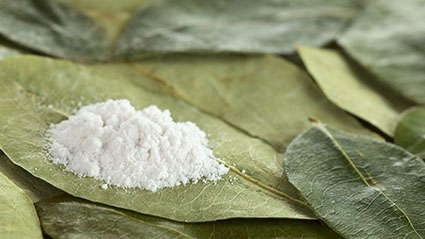Cocaine tampers with the brain’s brakes
7 October 2013

New results from Christian Lüscher and his group show that cocaine not only acts on excitatory transmission but also affects inhibitory transmission provoking loss of an intrinsic brake in the brain. Cocaine-evoked synaptic plasticity in the nucleus accumbens and the ventral tegmental area leads to circuit reshaping the study, published in Science, reveals.
Cocaine, like all addictive drugs, increases dopamine concentrations in the brain’s reward system. Amplified dopamine signals to receptor neurons causing a sensation of euphoria leading to risky behaviour. Eventually, the drug evokes synaptic plasticity at several excitatory synapses, remodelling neuronal circuitry so that the behavioural changes characterising addiction remain long after drug withdrawal.
Christian Lüscher’s team identified mechanisms in the brain that could explain cocaine addiction behaviour. Working with mice, their experiments showed that the drug not only stimulates excitatory neurons in the reward system, but also affects inhibitory neurons, whose role is to dampen a specific set of the excitatory neurons. The overall effect is the loss of an intrinsic braking system and disinhibition of a type of dopamine neuron. The system, out of control, then adapts.
The scientists show that circuitry communication changes induced by cocaine affects both excitatory and inhibitory transmission between two types of neurons: those of the nucleus accumbens, associated with reward, pleasure and reinforcement learning and those of the ventral tegmental area, which play a crucial role in learning and motivation.
Synaptic changes
‘The aim of this study was to define changes occurring in excitatory and inhibitory transmission in the different nuclei but also in the brain structures that are the targets in the reward system’, resumes the University of Geneva Professor and Synapsy partner. ‘We show that synaptic plasticity of inhibitory transmission underlies the pathological behaviour observed in addiction. This is therefore a direct demonstration of the synaptic basis of a mental illness, which is at the heart of Synapsy’s research.
A major goal of this research will be to stimulate selected neurons of remodeled circuits in addicts to attempt to reverse drug-evoked synaptic plasticity. One possibility would be to use deep brain stimulation, already in use for treating patients with Parkinson’s disease. By placing a stimulating electrode into the brain, it may be possible to reset the circuit and overthrow cocaine adapted behaviour.
Author : Anne-Muriel Brouet, EPFL
Reference :
Bocklisch C, Pascoli V, Wong JC, House DR, Yvon C, de Roo M, Tan KR, Lüscher C;
Cocaine disinhibits dopamine neurons by potentiation of GABA transmission in the ventral tegmental area.
Science 341(6153):1521-5, Sep 2013. doi:10.1126/science.1237059 >
